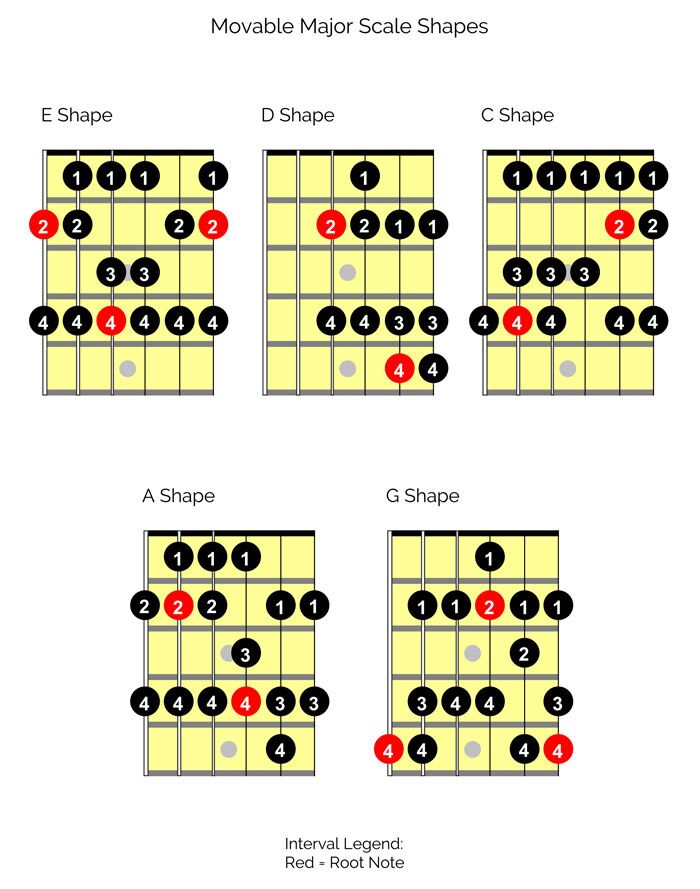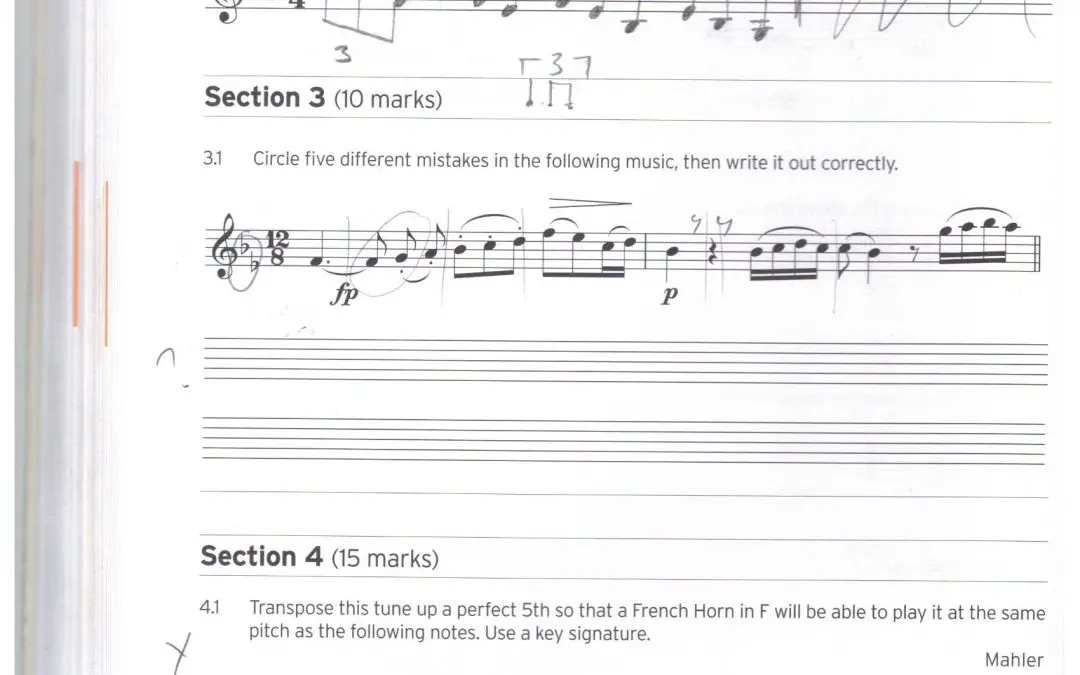Imagine you’re standing in front of a locked door, holding a mysterious key in your hand. You know that the key is important, but you have no idea how to use it to unlock the magical secrets hidden behind that door. Well, welcome to the world of guitar key signatures! These elusive musical codes can leave even the most seasoned guitarists scratching their heads in confusion. But fear not, dear reader, for in this article we will unravel the mysteries of guitar key signatures and provide you with expert advice on how to crack the code and unleash your full musical potential. So put on your thinking cap (or should we say, strumming cap?) and get ready to dive deep into the enchanting world of musical cryptography!
Contents
- 1 Understanding the Basics of Guitar Key Signatures
- 2 Exploring the Circle of Fifths and Its Importance for Guitarists
- 3 Decoding Major and Minor Key Signatures on the Guitar
- 4 Practical Exercises for Mastering Key Signatures on the Guitar
- 5 The Role of Accidentals in Guitar Music and How to Interpret Them
- 6 Tips from Experts on Memorizing and Applying Key Signatures
- 7 Common Pitfalls When Learning Key Signatures and How to Avoid Them
- 8 FAQs
- 9 Rock On!
Understanding the Basics of Guitar Key Signatures
So you’ve picked up the guitar and you’re ready to rock out, but wait – what’s the deal with these key signatures? Don’t fret (pun intended), we’ve got you covered with the basics of guitar key signatures.
Let’s break it down:
- Key signatures tell you which notes are going to sound good in a particular song. Think of them as your cheat sheet for playing in key.
- Each key signature has its own set of sharps or flats. Sharps like to raise the pitch of a note, while flats lower it. It’s like musical math, but way more fun.
- Some keys are easier to play in than others. Keep an eye out for those friendly keys that don’t have a ton of sharps or flats – they’re like the cool kids of the key signature world.
Remember, practice makes perfect when it comes to understanding key signatures. So keep on strumming, keep on rocking, and soon you’ll be a key signature pro!

Exploring the Circle of Fifths and Its Importance for Guitarists
So, you think you can play a mean tune on your guitar? Well, buckle up, because we’re about to dive into the magical world of the Circle of Fifths!
For us guitarists, the Circle of Fifths is like our secret weapon. It’s like having a cheat code for mastering chord progressions, scales, and key signatures. With the Circle of Fifths by your side, you’ll be shredding like a rock god in no time!
Picture this: you’re jamming with your buddies, and someone calls out a key change. Without missing a beat, you consult the Circle of Fifths and effortlessly transition into the new key. It’s like having a musical GPS that guides you to the perfect destination every time!
But wait, there’s more! The Circle of Fifths isn’t just a tool for playing killer solos. It’s also a roadmap for unlocking the mysteries of music theory. Want to understand the relationships between different keys? The Circle of Fifths has your back. It’s like having a wise old sage whispering music theory secrets in your ear!

Decoding Major and Minor Key Signatures on the Guitar
So you’ve finally decided to tackle the mysterious world of key signatures on the guitar. Congratulations! Get ready to unlock the secrets of major and minor keys like a musical Sherlock Holmes.
Let’s start with the major keys. Think of them as the popular kids in high school – they’re confident, outgoing, and always in the spotlight. Major key signatures are like those catchy pop songs that get stuck in your head for days. They’re bright, happy, and full of energy. Some popular major keys to learn on the guitar include C major, G major, and D major.
Now, onto the minor keys. These are like the misunderstood rebels of the music world – moody, mysterious, and a little bit edgy. Minor key signatures have a darker, more emotional vibe compared to their major counterparts. Think of them as the indie rock bands of the music world. Some cool minor keys to explore on the guitar include A minor, E minor, and B minor.
As you dive deeper into the world of key signatures on the guitar, remember that practice makes perfect. Don’t be afraid to experiment with different keys and see how they can enhance your playing style. Who knows, you might just stumble upon a hidden musical treasure that unlocks a whole new level of guitar wizardry. Happy decoding, rockstar!

Practical Exercises for Mastering Key Signatures on the Guitar
So you’ve decided to take on the challenge of mastering key signatures on the guitar? Congratulations, you brave soul! Don’t worry, with a little practice and dedication, you’ll be slaying those key signatures like a boss in no time.
One fun and effective exercise you can try is playing through all 12 major key signatures in a row. Start with C major and work your way up the fretboard, shifting positions as you go. This will not only help you memorize the key signatures but also improve your fretboard knowledge and dexterity.
Another great exercise is to practice playing scales in different key signatures using only your ear. Put on a backing track in a random key and try to play along without looking at any written music. This will help train your ears to recognize key signatures and improve your improvisational skills.
Lastly, challenge yourself to transcribe songs in different key signatures. Pick a favorite tune and try playing it in a key other than the original. This will not only expand your musical repertoire but also help you become more familiar with the unique characteristics of each key signature.

The Role of Accidentals in Guitar Music and How to Interpret Them
Accidentals can be a real pain in the you-know-what when you’re trying to play your favorite guitar tunes. But fear not, dear guitarists, for I am here to shed some light on these pesky little symbols and help you make sense of them.
First things first, let’s talk about what accidentals actually are. In a nutshell, accidentals are those tiny symbols that pop up in the middle of a piece of music to tell you to play a note that’s not in the key signature. Think of them as the rebellious teenagers of the music world – they don’t like to follow the rules, but you gotta deal with them anyway.
Now, when you come across an accidental in a piece of guitar music, it’s important to know how to interpret it. Here are a few tips to help you navigate through the treacherous waters of accidentals like a pro:
– **Sharps:** When you see a sharp symbol (#) in front of a note, it means you need to play that note one step higher than usual. So if you see a C# in the music, you’ll play a C# instead of a plain ol’ C.
– **Flats:** On the flip side, if you come across a flat symbol (♭), it means you need to play that note one step lower. So if you see an F♭, you’ll play an F♭ instead of an F natural.
– **Naturals:** Sometimes you’ll see a natural symbol (♮) in front of a note, which simply means to play the note as written without any sharps or flats. It’s like a little musical reset button – just play the note as if nothing ever happened.
Tips from Experts on Memorizing and Applying Key Signatures
So, you’re tired of fumbling through key signatures like a lost puppy in a musical maze? Fear not, dear reader, for we have some expert tips to help you conquer this daunting task with ease.
First and foremost, repetition is key (pun intended). Practice, practice, practice until those pesky sharps and flats become as familiar as your favorite pair of socks. Trust us, you’ll thank us later.
Secondly, don’t be afraid to use mnemonic devices to help you remember those tricky key signatures. For example, “Father Charles Goes Down And Ends Battle” can help you remember the order of sharps (F, C, G, D, A, E, B).
Lastly, make sure you understand the relationship between major and minor key signatures. Knowing how they are related can help you apply your knowledge more effectively in your musical endeavors.
Common Pitfalls When Learning Key Signatures and How to Avoid Them
So you’ve decided to tackle learning key signatures, eh? It’s a noble pursuit, but beware of these common pitfalls that can trip you up along the way:
Memorizing without understanding: It’s easy to get caught up in the memorization game and forget to actually understand why certain key signatures have the sharps or flats that they do. Make sure you take the time to grasp the logic behind key signatures so you’re not just regurgitating information like a parrot.
Ignoring the order of sharps and flats: Ah, the dreaded order of sharps and flats. It may seem like a simple concept, but one misstep and suddenly you’re playing in the key of F# major instead of Gb major. Don’t be a victim of musical dyslexia – memorize that order like your life depends on it.
Getting lazy with your practicing: It’s easy to get complacent once you’ve mastered a few key signatures, but don’t rest on your laurels. Keep practicing regularly to ensure the information stays fresh in your mind. Key signatures are like Pokemon – you gotta catch ’em all!
FAQs
Why do guitar players need to understand key signatures?
Well, imagine trying to solve a musical mystery without the key to the musical code. Key signatures are like secret handshakes that unlock the true potential of a song.
How can I quickly figure out what key a song is in?
Think of key signatures as musical fingerprints. By looking at the sharps or flats at the beginning of a piece of music, you can sleuth your way to the correct key in no time.
What’s the deal with sharps and flats in key signatures?
Think of sharps as the cool kids who hang out at the sharp end of the musical spectrum, while flats are the laid-back, chill musicians who prefer the flat side of town. Depending on which sharps or flats appear in a key signature, you can determine the key of a song.
Can key signatures change within a song?
Just like a plot twist in a good mystery novel, key signatures can change within a song to keep you on your musical toes. These changes are called modulations, where a song shifts keys to add depth and complexity.
How do key signatures affect guitar playing?
Key signatures are like a treasure map for guitar players, guiding them through chord progressions and scales with ease. By understanding key signatures, guitarists can unlock the full potential of their musical prowess.
Rock On!
Congratulations, you’ve officially unlocked the secret to understanding guitar key signatures! Now that you’re armed with this expert advice for deciphering musical codes, go forth and impress your fellow musicians with your newfound knowledge. Remember, practice makes perfect, so keep strumming those strings and let the music flow. Rock on!



